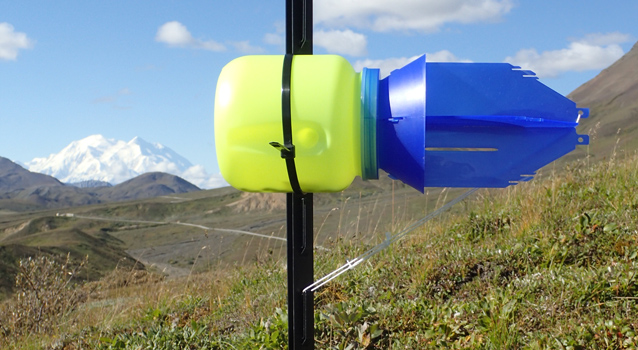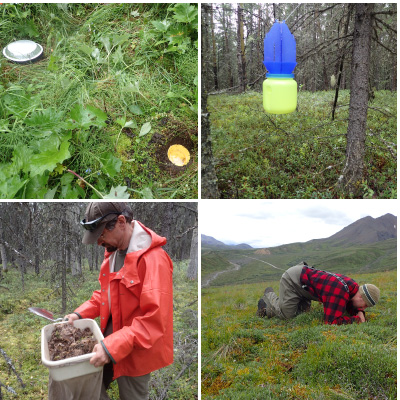
NPS Photo / J. Rykken
The climate is changing. Warming temperatures and altered weather patterns will likely have dramatic effects on landscapes at high elevation and in northern latitudes. Thus, a significant change over upcoming decades is certain for subarctic parks such as Denali. Tools like repeat photography show that glaciers are receding, lakes are shrinking, and vegetation boundaries are shifting at very fast rates. How are animals responding to these shifts? For the vast majority of Denali’s animals (aka the invertebrates), there is an incomplete picture. Researchers don’t have a good idea about which species live here or how they are distributed across habitats. To be able to track invertebrate responses to effects from climate change, it is necessary to start with a basic understanding of who lives here, now.

NPS Photos / J. Rykken
Arthropods make up the most diverse and abundant component of Denali’s fauna. They perform important roles in almost all park ecosystems (e.g., pollination, nutrient cycling). However, far less is known about their diversity and habitat associations than for vertebrate species such as grizzly bears. Many arthropods are known to be good indicators of habitat health and diversity. Elsewhere in the world, they are used to monitor changes associated with climate change, through shifts in range (i.e., where they live) and phenology (i.e., the timing of their life cycle). Denali makes an ideal natural laboratory to investigate arthropods in different habitats, especially those that habitats that are expanding (e.g., forest and shrub habitats) and shrinking (e.g., open tundra).
This project focuses on two important arthropod groups in Denali: pollinators (bees, flower flies, butterflies) and ground-dwelling beetles and spiders (primarily predators). Researchers want to know how arthropod communities change as elevation increases, because the highest elevation habitats are likely most affected by climate change. To do this, they have set up plots in four different habitat types: low elevation forest; mid-elevation shrub; high elevation tundra; and rocky habitats above the tundra. Researchers measure the diversity of arthropod species in each habitat plot every two weeks throughout the growing season using a veriety of collecting techniques (see photos). This allows them to track where each species lives, and when it is active. The results of the project will show researchers what patterns of arthropod distribution and activity (phenology) look like now, and will allow them to monitor changes in the future. Because these tiny animals are major players in ecosystem processes, it is expected that the project will provide valuable insights into how climate change may affect Denali ecosystems.
Another goal of the project is to educate park staff and visitors about arthropod diversity through various activities (e.g., bioblitzes, field seminars, presentations) and media. The project is a collaborative effort between Denali NPP and the entomology program at University of Alaska Fairbanks (UAF), including one graduate student.
Last updated: December 20, 2016
